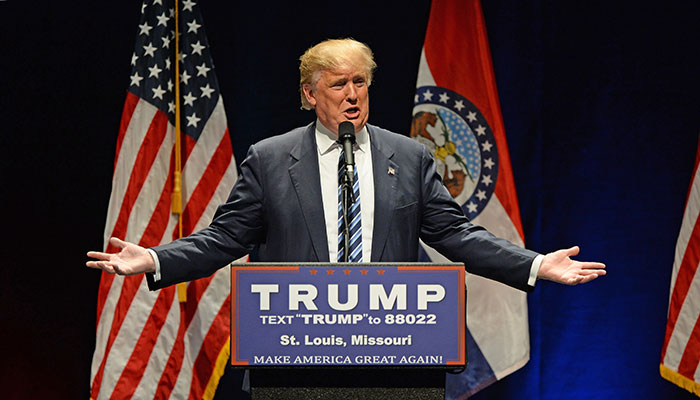Washington’s The Hill newspaper said yesterday it had learned that Trump’s transition team has been putting together plans to dramatically reshape the US budget, with a number of programmes and initiatives set to be axed following his inauguration later today.
The news appears to contrast with the president-elect’s campaign suggestions that he would substantially boost government spending – a pledge that bolstered markets and growth forecasts for the global economy.
However, Trump’s campaign statements related largely to spending on infrastructure. According to The Hill, his planned cuts could target the arts, broadcasting, energy initiatives and programmes that provide economic support to disadvantaged communities or struggling sectors.
The latter includes eliminating a number of agencies that sit within the US Department of Commerce, including: the Minority Business Development Agency; the Economic Development Administration, which provides grants and technical assistance to economically distressed communities; the International Trade Administration, which promotes US exports of non-agricultural services and goods; and the Manufacturing Extension Partnership, a public-private partnership that works to boost US manufacturing.
Cutting the four programmes would deliver savings of almost $900m in 2017. Calls to axe these programmes originate in a report published last year by conservative think-tank The Heritage Foundation, which The Hill said has been used as a blueprint by Trump’s transition team.
It envisages being able to reduce taxes and the national debt while balancing the budget by controlling spending and reforming entitlement programmes.
The National Endowment for the Arts, which has requested $149.8m from the government this year, and The National Endowment for humanities, which has requested the same amount, would also reportedly be axed. Meanwhile, the Public Broadcasting Corporation would be privatised.
At the Department of Justice, the Office of Community Orientated Policing Services, Violence Against Women Grants and the Legal Services Corporation would go, while funding for its Civil Rights and Environment and Natural Resource divisions would be reduced.
Funding for nuclear physics and advanced scientific computing research for the Department of Energy would be scaled back to 2008 levels and the Office of Electricity, the Office of Energy Efficiency and Renewable Energy, and the Office of Fossil Energy, which focuses on emissions-reduction technology, would be discontinued.
Funding for the Overseas Private Investment Corporation, the Paris climate change accord efforts and the United Nations’ Intergovernmental Panel on Climate Change – all of which are under the jurisdiction of the State Department – could also be dropped, it was reported.
Overall, The Hill said the blueprint under consideration would reduce federal spending by $10.5tn over ten years.
This could make way for Trump’s planned spending on infrastructure; but for Republicans, the allure of the plans will be their potential to contain public debt.
Conservative politicians have become increasingly alarmed at the size of the federal debt under president Obama. It currently stands at around $19.5tn, but how much of that can be attributed to the outgoing president is up for debate, depending on what factors you take into account.
The biggest contributors to US national debt are Medicare and other social security entitlements, both of which Trump has pledged not to touch. As a result, even with the potential cuts, achieving substantial reductions in the national debt burden will be a serious challenge if Trump plans to keep his word.
Obama has already set the budget for the 2016/17 fiscal year, so Trump’s first few months in office are unlikely to generate any substantial changes. Trump will then present his budget plans within 100 days of taking office, although a preview of his administration’s main priorities are expected within 45.
His administration will then have to get the proposals passed by Congress, which could prove difficult even with the Republicans in control of both houses.
Analysts believe that there is at least one area of wide agreement – tax cuts. In a recent note, analysis firm Capital Economics said it expects a substantial reduction in taxes, mostly benefitting the wealthy, by mid-2017.
This would be worth around $4tn over the next decade and push the federal budget deficit up to more than 5% of GDP, it projected, putting the federal debt burden on course to exceed 100% of GDP within a decade.














